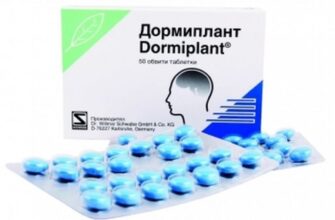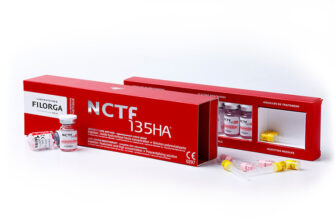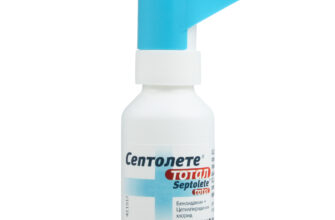Review of the best according to the editorial board. On the selection criteria. This material is subjective and does not constitute advertising and does not serve as a purchase guide. Before buying, you need to consult with a specialist.
Cracks on the heels, no matter how trite it may sound, can cause a lot of torment to their owner, especially in the case of their constant deepening and expansion. The progression of cracks occurs as a result of the influence of two factors: hyperkeratosis, and trophic disorders (with a decrease in blood circulation).
What is hyperkeratosis? This is an excessive keratinization process. There are anatomical prerequisites for the appearance of an excess amount of horny substance (an array of dead epithelium) on the feet. It:
- rough skin of the soles, rich in sweat glands;
- the presence of a very thick epidermis, which includes a shiny layer composed of a special protein called eleidin. This layer is located only in the skin of the palms and soles, and therefore the palms and soles have a characteristic light matte sheen, which is not characteristic of other areas of the skin;
- constant load when walking;
- the use of uncomfortable and oversized shoes;
- synthetic and artificial materials for footwear;
- oddly enough, but this is an overly active lifestyle: constant walking and playing sports make keratinocytes react, and secrete an excess amount of the protein-keratin. Excessive cell proliferation occurs, and the result is the phenomenon of plantar hyperkeratosis.
Such thick and rough skin becomes less elastic, it loses its elasticity, its sensitivity decreases, and it is very easy to crack. In addition, overdevelopment of the stratum corneum is a risk factor for the development of fungal infection, since keratin is a 'pure' organic matter. Therefore, dead skin is a tasty food for many dermatophyte fungi and molds.
However, it is a mistake to believe that hyperkeratosis is any disease taken separately. This is a symptom that can accompany various skin diseases or appear on its own. So, hyperkeratosis is characteristic of some forms of congenital ichthyosis, psoriasis, and some types of erythroderma. Even a completely healthy person may have excessively rough skin where it constantly comes into contact with clothing, for example, areas of rough and lumpy skin on the elbows. This is also a phenomenon of mild, physiological hyperkeratosis.
What are other risk factors and causes of hyperkeratosis that need to be considered, and which can lead to severe pain syndrome and the development of chronic and deep cracked heels? These reasons include:
- intermittent claudication (with circulatory disorders);
- deformity of the foot, including 'bones';
- various forms of flat feet;
- obesity, and diabetes mellitus;
- the presence of a fungal infection;
- vitamin deficiency, and especially fat-soluble vitamins – A and E;
- chronic anemia and iron deficiency;
- polyneuropathy;
- the presence of bad habits.
Almost all patients with cracked heels and excessive keratinization of the skin of the feet begin to treat themselves at home, and do not consider it necessary to consult a doctor. This is a big mistake, since a dermatologist can identify the reasons that will require not only care, but also treatment, and will be able to timely separate household risk factors from medical indications for treatment.
Usually, local therapy for the treatment of cracked heels is reduced to the elimination of excess keratin, and for this, keratolytics are used. It is best to use them at the initial stage in conjunction with pedicure brushes, pumice stones and scrubs.
The second group of products are preparations of intensive moisturizing, because with excessive hyperkeratosis, dry skin of the feet is observed, and it is this that provokes the appearance of cracks when the elasticity of the skin is low, and the tensile strength is even lower. Of great importance is the use of nutritious ointments and creams containing vitamins and provitamins, as well as the appointment of drugs that help restore the skin and heal the actual cracks.
Finally, it is imperative to deal with the prevention of mycoses, and periodically use antifungal drugs, at least for the preventive treatment of shoes. In severe cases, due to any disease, with congenital skin anomalies, for example, in the presence of ichthyosis, specific treatment with hormonal creams and ointments is possible, as well as ingestion of retinoids – this is a special group of drugs that is indicated for the treatment of hyperkeratosis and severe forms acne.
Consider the popular and effective groups of topical drugs that are used for cracked heels. By the way, almost all of these drugs can be used not only in the presence of cracks in the soles, but also in the occurrence of cracks in the palms, with some types of dry eczema complicated by hyperkeratosis. Each drug has an INN first, or international non-proprietary name. The first of the drugs is the original drug, and then, if available, its commercial copies, or generics. If possible, the average cost for the originator drug is given, as well as the minimum price for the cheapest generic. Prices are valid for July 2019 for pharmacies of all forms of ownership in the Russian Federation.
It should be borne in mind that cracked heels may not be a medical, but a cosmetic problem. Therefore, many products are sold in household cosmetics stores rather than pharmacies. Accordingly, in this case, these funds will be simply listed, since the official instructions for use, as for a medicine, are not attached to them.
- An overview of creams, ointments and other topical remedies for cracked heels
- Keratolytics
- Salicylic ointment
- Advantages and disadvantages
- Losterin foot cream
- Advantages and disadvantages
- Numis Honey with urea for heels
- Advantages and disadvantages
- Milgamma® foot care cream
- Advantages and disadvantages
- Uroderm
- Advantages and disadvantages
- Reparants
- First aid for feet from cracked heels
- Advantages and disadvantages
- Gehwol Anti-Crack Ointment (Schrunden-Salbe)
- Advantages and disadvantages
- Methyluracil ointment
- Advantages and disadvantages
- Lokobase Ripea
- Advantages and disadvantages
- Biopin
- Advantages and disadvantages
- Conclusion, or 'watch out, fungus'!
An overview of creams, ointments and other topical remedies for cracked heels
| Nomination | a place | Name of product | price |
| Keratolytics | 1 | Salicylic ointment | RUB 25 |
| 2 | Losterin foot cream | 838 RUB | |
| 3 | Numis Honey with urea for heels | 436 r | |
| 4 | Milgamma® foot care cream | 578 r | |
| 5 | Uroderm | RUB 150 | |
| Reparants | 1 | First aid for feet from cracked heels | 136 RUB |
| 2 | Gehwol Anti-Crack Ointment (Schrunden-Salbe) | 1 032 rub. | |
| 3 | Methyluracil ointment | RUB 69 | |
| 4 | Lokobase Ripea | 484 RUB | |
| 5 | Biopin | 140 RUB | |
| prevention rules | |||
Keratolytics
The first group is keratolytic agents. Their task is to soften the excess stratum corneum on the heels, which consists of an array of dead epidermis. All local keratolytics are best applied while the feet are hot, when the heels are steamed in a hot bath. During this hygienic bath, the stratum corneum will be mechanically removed using a fine-grained pumice stone. It is strictly forbidden to use even special blades, since with a decrease in sensitivity on the heels, and with the intensive development of hyperkeratosis, you can cut your leg, cutting off not only the stratum corneum, but also healthy skin. The most popular and cheapest remedy is salicylic acid, which comes in the form of salicylic ointment.
Salicylic ointment
Rating: 4.9
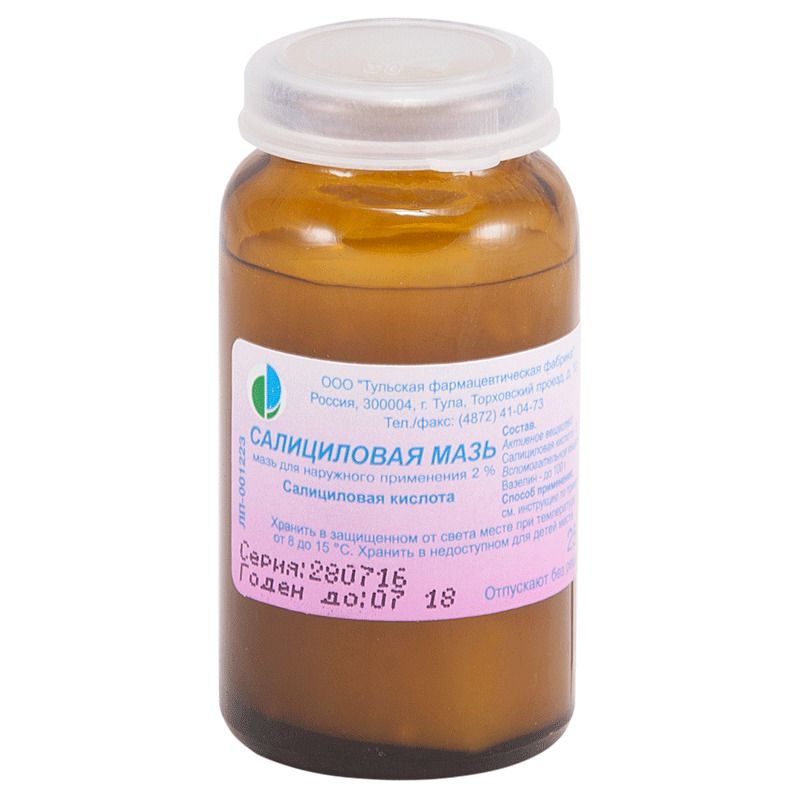
Salicylic ointment is based on salicylic acid, perhaps the most famous keratolytic. Salicylic ointment comes in various concentrations, and now in the pharmacy you can find an ointment with a concentration of 2%, packaged in dark glass jars of 25 and 50 g. A 25-gram package has a very low price: from 20 to 25 rubles. It is produced by the Tula Pharmaceutical Factory. The ointment softens and loosens the keratinized epidermis, but along the way it has anti-inflammatory, antimicrobial and even early-cleaning effects. This means that it can be applied not only to simply hardened skin, but also to the area of deep cracks. It must be used in the form of long-term applications, for example, overnight. This ointment is also used in surgery, when it is necessary to cleanse the wound, from masses of pus and necrosis. The salicylic acid is then left under the napkin even for 2 or 3 days. Therefore, it makes no sense to just apply the ointment for half an hour, and then wash it off: it is advisable to apply it on the feet in the evening for the whole night. In severe cases, after application, you should even wrap your legs with special waxed paper, or apply an occlusive bandage. The duration of treatment is from 7 days to 3 weeks.
Advantages and disadvantages
A big plus of salicylic ointment is its combined effect, it cleans the wound, helps it heal, and prevents the development of microbes. Of course, ubiquitous availability and low cost are a huge plus. But at the same time, salicylic ointment has an acidic reaction, there is no balanced perfume composition in it, and such a monopreparation cannot be used regularly to soften the skin of the heels. Therefore, the task of pure salicylic acid is to use it only at the initial stage of treatment, when it is necessary to soften and remove horny masses. As soon as the goal is achieved, then it is necessary to resort to other drugs.
Losterin foot cream
Popularity rating: 4.8
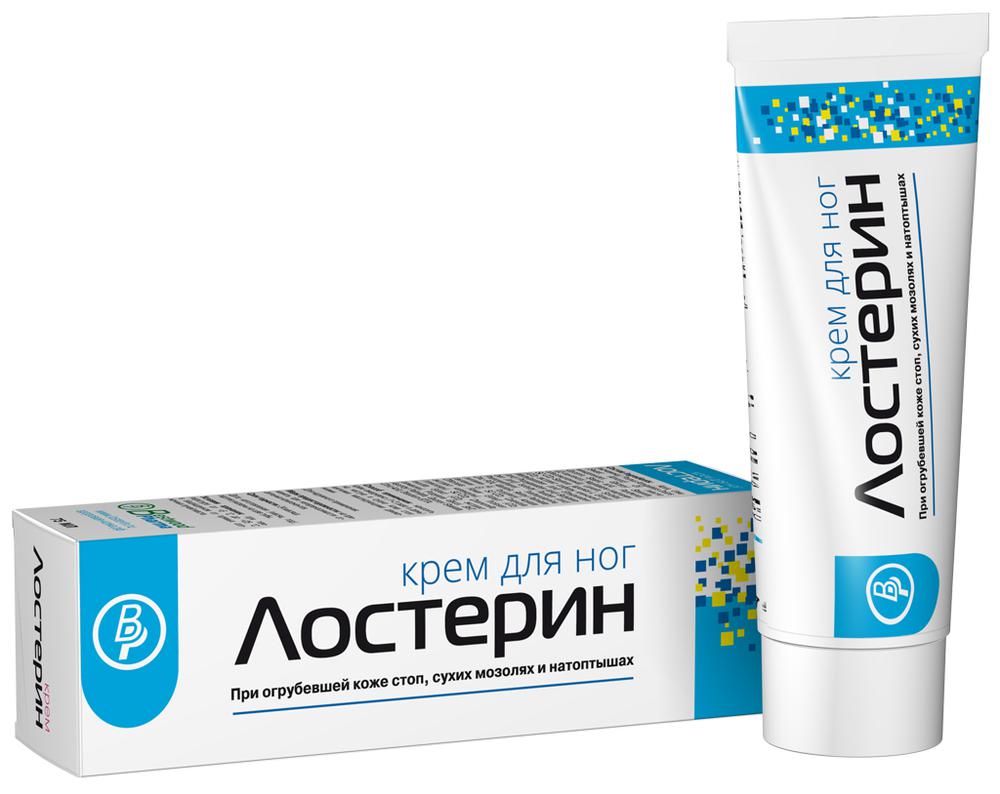
Another highly effective combination drug is Losterin. It is produced by the domestic company Ascom, and one tube weighing 75 g is quite expensive: from 470 to 710 rubles. It can be classified into different groups, but it is logical to consider it, among other things, a keratolytic, since it contains urea. In addition to urea, the composition includes deresined Naftalan oil, almond oil, Sophora extract, salicylic and stearic acids. As you can see, the composition includes metabolic and dermatotropic agents, but still the emphasis is on keratolytics.
The drug is indicated for corns, plantar psoriasis, coarse and dry skin of the feet, with long-term non-healing erosions and cracks. It can be used for itching and peeling, as well as together with antifungal therapy in the treatment of dermatomycosis. It is used prophylactically for excessive sweating. It should be applied no more than three times a day with gentle movements on the area of cracks, and rubbed with light movements. The course of treatment is from 2 weeks to a month.
Advantages and disadvantages
An advantage can be considered a combination of two keratolytic drugs – urea and salicylic acid, which increases the activity of the drug. It is also important that deresined naphthalan is also included in the composition. This improves the healing of wounds and cracks. Perhaps the advantage is the creamy consistency. Losterin is quickly absorbed, does not stain shoes and socks. But in order for the cream to be quickly absorbed, it is necessary to apply it after daily hygienic warm or hot baths. The negative side, perhaps, can only be a rather high price. However, it is justified, since there is no Naftalan oil field in the Russian Federation, and it has to be imported from Azerbaijan.
Numis Honey with urea for heels
Popularity rating: 4.7
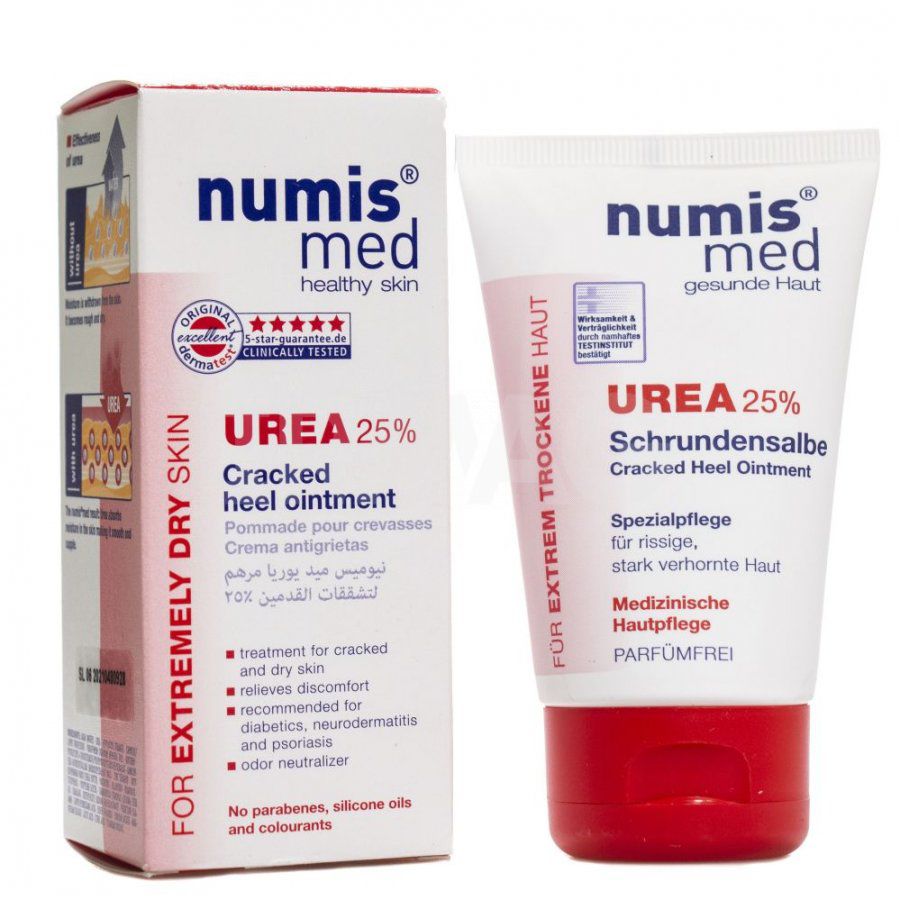
The next cosmeceutical preparation is Numis Honey with urea. Urea, or urea, is a highly effective keratoplastic and keratolytic agent. Even if you manage to purchase pure urea and prepare a 10% solution, it will work effectively and soften the skin. It restores the upper layer, the stratum corneum begins to function more efficiently and large keratinized masses do not accumulate. They peel off quickly, the epidermis is renewed faster. At the same time, the skin becomes more elastic, and the healing of injuries and cracks is faster. The cream also prevents the formation of calluses and calluses, eliminates unpleasant odors, and restores skin smoothness. This cream can be used continuously, since urea is not the only ingredient. The composition also includes glycerin, lanolin, zinc stearate, panthenol, magnesium sulfate, allantoin, bisabolol, tocopherol, as well as perfumery components, which do not include chemical dyes, fragrances and mineral oils. This rather 'powerful cream', containing 25% urea, is produced by the German company Mann & Schröder GmbH, and the cost of a tube weighing 50 grams in online stores is from 436 rubles. Slightly higher, from 460 rubles, you can purchase it in pharmacy services for ordering medicines.
Advantages and disadvantages
Perhaps the advantage is the high concentration of urea of 25%, which means that the cream will work intensively. Usually cheap creams for the care of dead skin of the feet contain 10% urea, and a rather unbalanced composition. Here the concentration is higher, but the cream itself acts softly and comfortably, it contains only natural, environmentally friendly components, and at the same time its cost is relatively low, but it lasts for a long time. Perhaps, the negative aspect of the cream can be considered the advice to apply it constantly, and it is in this case that the expense of funds will be much more significant, because in this case it is used not just for the course of treatment, but for daily use.
Milgamma® foot care cream
Popularity rating: 4.6

Milgamma cream for foot care should not be confused with Milgamma in the form of pills or Milgamma in the form of intramuscular injections. The last two forms are concentrated formulations of B vitamins and are used in neurological practice. And Milgamma for foot care is based on the action of 10% carbamide (urea). Urea is not just a keratolytic drug. She is still able to retain moisture, transferring it to the depths of the epidermis. A healthy stratum corneum contains about 1% urea, and when the skin dries and cracks, the urea content drops significantly. Therefore, it must be injected from the outside, bind the moisture and keep it in the skin. The use of well-purified urea reduces itching and softens the stratum corneum. Milgamma in this sense resembles salicylic acid, since the composition of the cream does not specifically contain a perfume composition and fragrance, but contains only urea and a hypoallergenic ointment base.
Besides feet, Milgamma is suitable for elbows and knees. It is usually used in the form of a small amount of cream, which is applied to the skin of the feet with light, massaging movements. Of course, it is best to apply the cream after intense steaming or taking a bath. The German company Vervag Pharma GmbH & Co. produces Milgamma foot cream, and one tube weighing 45 g on average costs 330 rubles.
Advantages and disadvantages
The advantage of this cream is its simple composition, which is absolutely hypoallergenic. The percentage of urea is lower here than in the previous cream, and therefore can be used in the early stages of heel problems. It was said above that the 10% concentration of urea is inherent in cheap creams, and they may be unbalanced, or contain artificial ingredients, and this is so. But this statement does not apply to Milgamma for legs, since it is produced by a German manufacturer, and it does not contain any additional artificial components. The only negative is the fact that this cream is not always available in pharmacies. The name 'Milgamma' can confuse pharmacists and pharmacists, and patients buying Milgamma are almost always interested in ampoules and tablets containing B vitamins, and few people know that Milgamma is also a foot cream. Perhaps this is why, due to confusion, sales of this cream in Russia are not very large, and problems arise with the drug in various pharmacies.
Uroderm
Popularity rating: 4.5
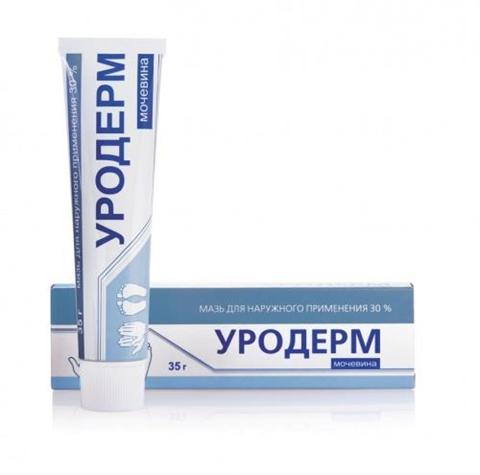
Finally, the review of medicinal and cosmetic preparations from the group of keratolytics is completed by the Uroderm remedy. This is an ointment for external use, containing, perhaps, the highest concentration of urea of all the funds presented – 30%. This ointment is produced in tubes of 10 grams and 35 grams, and the manufacturer is the Domestic JSC Retinoids. The price for a small package ranges from 120 to 370 rubles, and the cost of a large package is from 290 to 470 rubles. Uroderm intensely moisturizes and softens cornification. If applied together with other local remedies, then it will be most effective. In addition to urea, Uroderm contains glycerin, emulsion wax and liquid paraffin.
Ointment Uroderm is very good for rough and stagnant cornification. In addition to intense keratinization of the feet with cracks, it can be used to prepare warts for removal, for the treatment of an ingrown nail before surgery, for diseases such as psoriasis, ichthyosis, and follicular keratosis. Since the drug is strong enough, it is not used for prophylaxis. To effectively soften especially strong areas of keratinization, you need to take a thin layer of ointment and apply under a protective bandage or plaster for 2 to 8 hours. After the skin on the feet is intensively softened, it should be steamed in a hot bath and then the horny masses should be scraped off with a pumice stone. With regular use, literally in a week there will be no trace of heavy keratinized masses and cracks on the heels.
Advantages and disadvantages
As it has already become clear, the advantages of Uroderm are its most powerful moisturizing and keratolytic effect. But this agent also has a side effect, because the concentration of urea is quite large. The affected skin can be reddened and irritated if Uroderm comes into contact with thin and normal skin. In this case, you need to either carefully monitor the site of application, or suspend the course of treatment. In addition to individual intolerance, there are no contraindications, but, however, in patients with angina pectoris, chronic heart failure, if they have recently had a heart attack, if there is chronic kidney damage with impaired function, it is necessary to limit the application of ointment to too large areas of the feet. This is 'heavy artillery' and must be used in a targeted manner.
Reparants
After removing, softening, exfoliating, eliminating excess horny masses, which reduce the elasticity of the skin on the feet, and contribute to the formation of cracks, it is necessary to restore skin nutrition and saturate it with essential vitamins, a source of collagen, herbal ingredients that contribute to disinfection and improve trophism.
Of course, in the previous section, topical preparations based on urea and salicylic acid were considered, and they also contributed to disinfection, improved water balance, and moisture accumulation in the depths of the epidermis. Still, it is advisable to use these drugs to eliminate the stratum corneum, and then, when the skin of the heels becomes tender and smooth, it is better to move on to more nourishing creams. Below we will consider popular and effective emollients, moisturizers and nourishing topical products that can be applied to the skin of the feet, not only when there is a problem with excessive keratinization and cracks, but also during daily care.
First aid for feet from cracked heels
Popularity rating: 4.9
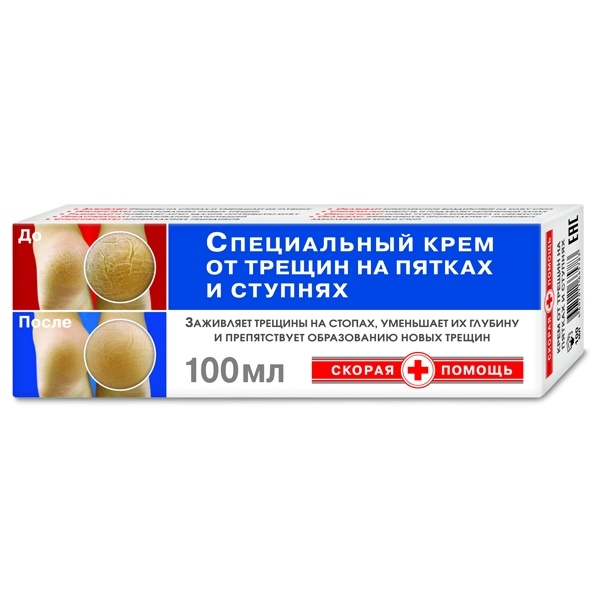
An ambulance for cracks is a domestic cream produced by KorolevFarm. It is inexpensive, a 100 ml tube can be purchased at a price of 120 rubles. The manufacturer of parapharmaceuticals KorolevFarm is widely known for such liquid balms as Healer, Rescuer and similar preparations. This foot cream also includes a liquid mass based on emulsion wax with the addition of vaseline oil, glycerin, beeswax, allantoin, olive oil. Nourishes the skin with panthenol, calendula extract. Aloe extract enhances local immunity, camphor cools and gives vigor, extracts of St. John's wort and aspen give an antiseptic effect, and propolis extract, rosehip and rosewood oil with the addition of vitamins make the perfume and medicinal composition more complete.
The cream intensively heals cracks, softens the skin, prevents excessive keratinization and restores damaged tissue. The composition of the cream is selected in such a way that the fungal infection cannot resist. Firstly, the nutrient medium for fungi – the stratum corneum – has been removed, and secondly, the antiseptic and disinfecting substances of the cream do not allow the fungi to develop completely. The method of application is simple. In the evening, after the bath, you should rub the cream into the skin of the feet, in the morning you can repeat this.
Advantages and disadvantages
The advantage can be considered a balanced composition and inexpensive price, the ability to cool feet due to camphor. The cream is well tolerated, and, perhaps, there are no negative aspects, with the exception of the individual intolerance that always exists in any drug. The only drawback that characterizes all cosmetics in general is the impossibility of curing cracks on the heels from the very beginning in the presence of an excess stratum corneum, using only drugs of this group. After all, this cream does not include a keratolytic substance.
Gehwol Anti-Crack Ointment (Schrunden-Salbe)
Popularity rating: 4.8
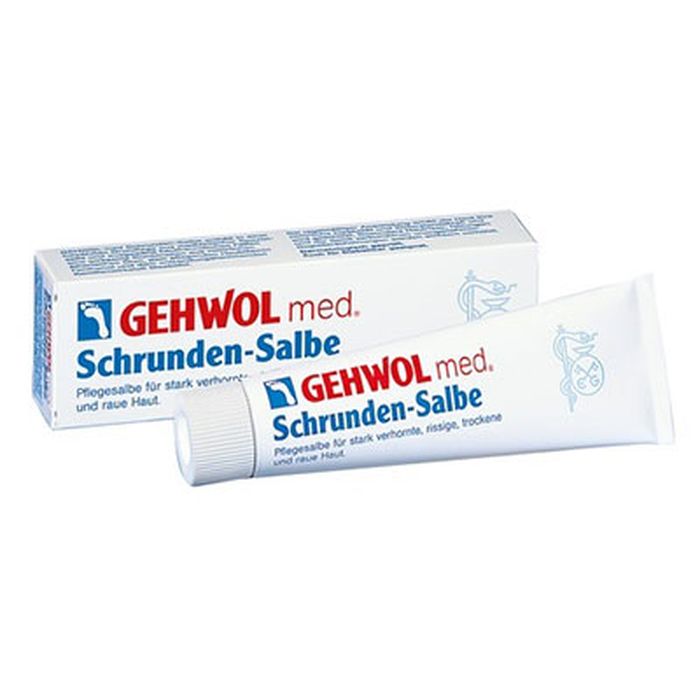
Gehwol is a world famous German brand and this section presents a special ointment for cracked skin for the feet. The ointment is made on the basis of panthenol, it contains petrolatum, bisabolol, oil of medicinal plants – rosemary and mint, lavender, thyme, lemon, menthol and camphor. The ointment is produced in tubes of 75 ml, a large tube of 125 ml. You can also purchase this ointment in 450 ml bottles with a dispenser. German quality also requires a good price: a small tube of 75 milliliters will cost you retail at a price of 700 rubles.
The components included in the composition intensively soften hard and dry skin, improve elasticity and heal cracks. This ointment is used not only for household cracked skin of the feet, but also for the prevention of the appearance of a diabetic foot, in patients with diabetes mellitus, as well as for their treatment. It is recommended to apply the ointment on the skin 1 to 2 times a day, and it is advisable to do this after a warm bath.
Advantages and disadvantages
The advantage of the entire Gevol line can be considered high efficiency and German quality, and the disadvantage is a rather high price for Russians. In addition, you need to order this product in online stores, since not all pharmacies provide such a wide range that all cosmeceutical lines are available. It remains true that the statement is still first necessary to remove excess horny masses by using keratolytics, and then use this ointment. In this case, the ointment will take much less, and the effectiveness of the application will be greatest. The ointment is well tolerated, almost no allergic reactions occur, and the effect of an overdose from frequent use was not noted.
Methyluracil ointment
Popularity rating: 4.7

Methyluracil ointment is considered popular, since it is sold in almost any pharmacy and is inexpensive. A tube of the Tula pharmaceutical factory weighing 25 grams can be bought at a price of 38-40 rubles. In addition to methyluracil, which is used as an intensive remedy for healing wounds and cracks, the ointment contains only an ointment base, and this is medical petroleum jelly and lanolin.
Petroleum jelly differs from lanolin in that petroleum jelly is produced from oil, it is hard paraffin combined with mineral oil, hence it has a melting point of 40-45 degrees on average. But lanolin is a purely organic substance that melts at body temperature and has a very complex composition. Lanolin in its chemical and physical properties is close to the composition of human sebum, and it is produced by extracting sheep wool from washing waters.
Thus, in methyluracil ointment there is a minimum set of ingredients, which ensures its cheapness. You can use methyluracil ointment as often as you like, you can smear it on your feet several times a day, but it's still better to do it at night. After all, the ointment has a thick, oily base, and can stain shoes and socks.
Advantages and disadvantages
The advantage of methyluracil ointment is the fact that it can be used very widely. It helps with the healing of burns and wounds, it can be combined with the external application of antibiotics and antiseptics to the skin, it can be used intravaginally in the treatment of colpitis, rectally in tampons – it is used for restorative therapy of anal fissures and hemorrhoids.
The price of the ointment is very democratic, and the prevalence is widespread. Methyluracil ointment is very well tolerated, and practically does not cause side effects. The only drawback is the absence of any antiseptics and antibacterial drugs in this ointment. Therefore, in the event that a deep crack in the heel is infected, it becomes sharply painful, the skin around the edges turns red, then it is necessary to start treatment with another ointment, for example, with Levomekol. In the same way, methyluracil ointment will not be able to eliminate horny growths on the feet, since there is no keratolytic and emollient in it. All the softening effects of methyluracil ointment are insignificant, and are associated with the presence of petroleum jelly and lanolin, but their function is completely different. Therefore, it is necessary to start treating cracks on dry heels with keratolytics.
Lokobase Ripea
Popularity rating: 4.6

This is a wonderful cream for very dry skin, which is used for patients with atopic dermatitis, and can also be used for intense keratinization of the skin of the feet with cracks.
There is a law that works great in reverse. It is undesirable to apply foot cream to the hands, and it is undesirable to apply hand cream to the face. It is generally forbidden to apply foot cream on the face. But absolutely any hand, face and body cream can be applied to the legs. Another question is, will the face cream be effective on the legs? Most likely not, and the price of the issue will be more than necessary.
But in the case of Locobase Ripea cream, such an exception can be made. It fights dry skin perfectly everywhere, including the skin of the heels. It contains soft white paraffin with a mixture of liquid and solid, glycerin, oleic and palmitic acids, carnauba wax, cholesterol and active ceramides. All this leads to intense hydration and enrichment of the skin with lipids. The cream is very greasy and helps to strengthen and preserve this fat layer on the skin. Locobase ripea can be considered a barrier type cosmetic. Once applied to the skin, it prevents moisture from evaporating. It is incorporated into the epidermis and begins to maintain the water-fat balance in the deep layers of the skin. It is known that even a single application of the cream protects the skin for 24 hours.
Since human feet are a surface of the skin prone to sweating, it is necessary to apply this remedy once a day in the evening, after a bath for the night. If we apply it intensively in the morning, then the formed fatty film on the skin of the feet will prevent perspiration, so naturally evening application is better. If you have problematic and dry skin of your hands, there is redness and peeling, there is a diagnosis of atopic dermatitis, or unfavorable factors of the natural environment affect the skin of your hands and body, then you can apply the cream up to 4 times a day to these areas of the skin. Lokobase Ripea is produced by the Italian company Temmler, and its cost is about 500 rubles. per tube weighing 30 g.
Advantages and disadvantages
The advantage of the drugs can be considered the unique ability to moisturize the skin and preserve the water – fat film, and the disadvantage is the rather high price, and some difficulties in purchasing this product in pharmacies. Of course, in big cities, regional and district centers, this tool is found much more often than in the outback. On the other hand, we can name a common drawback for all moisturizing drugs: being used as monotherapy, that is, alone, they cannot cope with rough skin of the feet, with massive layers of keratinized epidermis. Therefore, even if you use the best moisturizing nourishing creams, you should first treat your heels with a keratolytic.
Biopin
Popularity rating: 4.5
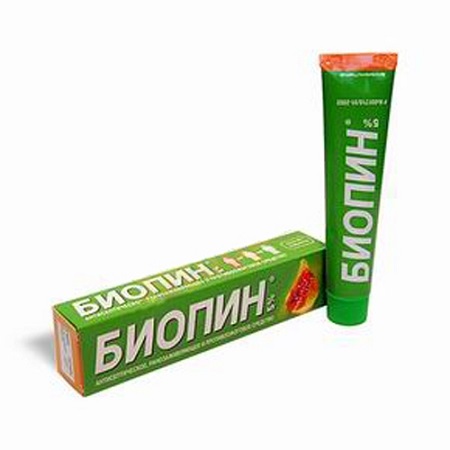
Biopin is an ointment that stands a little apart, since it is based on special medicinal natural ingredients. The composition includes edible rendered pork fat, olive oil, and beeswax. However, the main medicinal ingredient can be considered pine resin, from which turpentine is prepared. As a result, this light yellow ointment has a faint smell of beeswax and pine resin, a very pleasant smell.
Biopin is a domestic drug, and a 5% ointment in a 40-gram package will cost about 200 rubles. Biopin has an intense anti-inflammatory, regenerative and antimicrobial effect. It also improves local immunity, heals wounds, and fights inflammation. Biopin actively affects gram-positive cocci and E. coli. It is known that gram-positive microbes, such as streptococci and staphylococci, are saprophytes in the normal microflora of the skin, but in the presence of deep cracks in the heels, they can lead to the appearance of a secondary infection. Biopin enhances phagocytosis, protective blood cells begin to work more intensively.
Biopin is indicated for all types of excessive keratinization, for skin infection, for long-term non-healing wounds, for ichthyosis, keratoderma, for cracked feet, for eczema and atopic dermatitis. Additional indications are the use for psoriasis, acne, in the complex therapy of dermatomycosis. A big plus of Biopin can be considered its successful use in inflammation of the musculoskeletal system and musculoskeletal system. These are back pain, arthritis, spondylitis and osteochondrosis with neurological manifestations. Truly a universal ointment.
Biopin must be applied at the rate of up to 5 grams on an area of 5 centimeters, the frequency of application is 2-3 times a day, and it is desirable, nevertheless, to treat the skin with an antiseptic before applying. This means that 3% hydrogen peroxide, an aqueous solution of chlorhexidine, or Miramistin can be applied to cracks in the heels first. Then you need to blot the skin and apply Biopin in a thin layer. This should be done twice a day, morning and evening. If the effect of the ointment stops, then a small amount of beeswax remains around, which is a kind of barrier and protective factor.
Advantages and disadvantages
Biopin is a valuable natural product that is well tolerated, and only with individual intolerance and hypersensitivity does skin redness occur. They can be treated in case of pregnancy and breastfeeding, and if you combine Biopin with physiotherapy and antibacterial drugs, then in the case of infected cracks in the heels, the use of these funds increases the effectiveness of Biopin. The downside is that it is rarely available in pharmacies.
Conclusion, or 'watch out, fungus'!
Finally, as a 'bonus' to the above information, it tells you how to prevent fungal infections on your feet. A patient with hyperkeratosis, with rough skin on the soles, with cracking heels, is at risk for dermatomycosis, and especially, living in central Russia, Siberia, the Far East, however, in most of the country. Why? Yes, simply because in winter we often walk in warm and closed shoes. And heat, humidity, lack of light – these are the very comfortable conditions for the development of mycoses of the feet, with which it is necessary not only to fight, but also to prevent.
We list these simple rules that will prevent the appearance of the fungus on the thickened skin of the feet, and if it does, will prevent it from spreading to other members of your family, and will help to cope with it. Of course, if you already have a fungus, then these rules are not enough, antifungal, or antimycotic or fungicidal therapy prescribed by a dermatologist is necessary. So, here are these simple rules of prevention:
- almost every remedy described above works best after a foot bath. In order to successfully and safely carry out this procedure, you need to have your own individual basin, your own foot towel, individual pumice stone and brushes. Toe towels must be labeled and not used on the face;
- if there is a suspicion of the presence of a fungus, then it is necessary to change socks daily, wash them, and iron them with an iron on both sides with steam before use;
- it is advisable to replace insoles with new ones in 3-4 days, or use disposable ones altogether. The last two points are extremely important, since their observance allows you to eliminate fungal spores inside the shoe. Accordingly, the risk of contamination is greatly reduced;
- it is important to regularly treat the inside of closed shoes with hot steam, or ultraviolet dryers, even if the inside of the shoes is dry. Fungi do not like ultraviolet radiation very much and quickly die. In the summer, you can dry your shoes in the bright sun, after sprinkling the inner surface of the shoes with a special spray against fungus, in the winter you can place the shoes for several hours in the cold;
- treat the skin of the feet with high-quality antifungal sprays, especially if you are going to the pool, to play sports;
- it is better to have shoes made of genuine leather and fabric, in which the feet do not sweat and do not create an excessively moist atmosphere, comfortable for fungi;
- try to wear galoshes and rubber boots as little as possible. If you go on a visit, then always take a change of shoes with you, and never use someone else's slippers. In the summer, as often as possible, wear open, hygienic shoes – slates, slippers, expose your feet and legs to the sun;
- try to visit cosmetic nail and pedicure salons as little as possible. If you do visit them, then sign up to the same master, or even better – wear him your own proven manicure set. This is guaranteed to protect you not only from fungi, but also from HIV infection and from viral hepatitis;
- Finally, until you heal the rough and cracked heels of your heels – staying away from the pool and fitness center will significantly reduce your risk of getting a fungal infection.
And the last advice in the fight against rough heels, cracks and fungi: take care of your own health. The fungus is uncomfortable to be in constant struggle with the body's defenses, so it never develops on healthy skin. Therefore, if you have frequent sore throats, colds, dysbiosis or diabetes mellitus, thyrotoxicosis or pustular skin diseases, then the risk of getting a fungal infection increases significantly.
The popularity rating is based on the analysis of demand data from the wordstat.yandex.ru service
Attention! This rating is subjective and does not constitute an advertisement and does not serve as a purchase guide. Before buying, you need to consult with a specialist.



